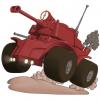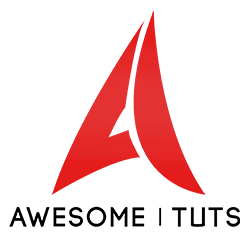I am currently also a lone wolf using Unity, but I am a little ahead: I dived into also doing 3D modelling from the start.
Let me tell you, the amount of time you can waste on creating 3D Models really is INSANE! A fully modelled character with a detailled normal map, highpoly count, multiple LODs, rigging, animations, clothing and props can take an expierienced 3D Modeller many weeks to create... often, you will find modellers, texture artists, riggers, animators, and other specialists working together to get more efficient in big studios.
The example you picked is one of the more complex projects to tackle: quite detailled normalmaps needed, photorealistic (or almost so), so quite detailed textures needed, rigging needed for animations, and so on.
IF you start from scratch, expect some months just to learn the needed anatomy to sculpt a human body that does not look like shit, then you need to go through the troubles of retopology and baking to a lower poly mesh (which sometimes takes me longer than the sculpt itself as the bake might show artefacts at places because the lowpoly mesh is not good enough), then it will take you some time to find out how to texturize this model, and then comes the whole process of creating a skeleton, weightpainting, setting up the rig, before you can even start with the animations. Of course with expierience you will work faster, but for your first model, expect to waste a LOT of time.
Now, there are a lot of tools and tricks to work smart. Which might save you a lot of time.
- First trick is to always work from a base mesh. Most 3D Modelers seem to do that with humanoid or other organic creatures, as remodelling the human body everytime is a waste, especially when your character is more or less the average human with just some small deviations from the norm (broader chin, a scar here and there, whatever). You get base models with most sculpting software (ZBrush or 3D Coat for example), there are a lot of free ones, there is even a free tool (Makehuman) to tweak your character from which you can export a 3D Mesh as base mesh.
Then a lot of modellers will tell you to keep all you do, and re-use where you can. Need a Human arm for some gruesome horror scene? Take the one you created for you character rig last week!
- Use specialised tools for every task. You can do pretty much everything in Blender, or 3DS Max, or Maya. Boxmodelling, Sculpting, Texturing, Retopo, Rigging, Animation.... they do it all!
But, apart from Boxmodelling, for most tasks there are more specialised tools that are sometimes even quite lowcost, that will make that specific task easier.
- Sculpting: Personally I use 3D Coat Voxmodelling for sculpting. It allows me to start sculpting without first doing a base boxmodel, and without needing to worry about the mesh topology, as the mesh is created automatically from an internal Voxel representation of the model.
- ZBrush is the Industry standart tool for Sculpting. A loot of good 3D Modelers will tell you its the best tool for sculpting.
- 3D Coat has a Voxmodelling mode and a traditional Sculpting mode.
- Both of these tools will at least beat Blender for various reasons when it comes to sculpting.
- There are more tools, like Mudbox, out there.
- Retopology: 3D Coat has a very powerful set of retopo tools. I cannot really compare it to the retopo tools in Blender, but from what I heard, the workflow is quite complicated. In 3D Coat, its made as easy as possible for you. Apart from the usual fight with getting all the high poly details unto the lowpoly mesh without artefacts, its quick and easy.
- Texturing: both 3D Coat and ZBrush have different quite powerful tools for 3D Painting, allowing you to paint directly on the 3D view of the model. Then there are new tools like DDO or the Substance Designer /Substance Painter that give you different powerful tools to work directly with materials containing tiling textures for all the channels without you needing to create all the channels separate. Also, tools like Crazybump and XNormal can help you to calculate additional maps or tweak your existing maps.
- Creating LODs: there are multiple (sadly quite expensive) tools in the asset store for Unity for LOD creation. I have not tried them out yet, but I will certainly give at least one of them a spin. If it works, it will save me many hours of my time, making the price a bargain. Also, there is now a webservice for LOD creation that has a free Unity plugin (of course you only get 2 Models LODs created for free, after that you need a subscription)... cannot remember the name though.
- Rigging and Animation: Here Mixamo comes to mind. Its an online service that gives you various tools for rigging and lets you purchase single animations you can then transfer to your models. The tools are pretty straightforward and they do work, which itself is a miracle, but of course its not without its limitations (tried it once with my first humanoid sculpt, it worked brilliant for the most part save the area between the legs where the weight paint was off). The library of animations is vast, sadly single animations are not too cheap. Still, if you need A LOT of characters rigged, and can afford their all access (around 1500$), might be a huge timesaver.
- Cloth creation and animation: Marvellous Deisgner is a tool created just for creating and draping virtual clothing. Its hugely powerful, but also has a steep learning curve, as you work with cloth patterns instead of polygons and UVs now.
- Use a tool that will let you created textured and rigged characters: Mixamo has a new tool, Fuse, that allows you to create your character from standart parts, skin it with a texture, and will generate the mesh with rigs from it, ready to apply animations to it (Mixamo of course will hope you buy some of them from their online store  )... they even added funtionality to let you import and use your own meshes, so you can create your own clothing and apply it to the character generated in the tool.
)... they even added funtionality to let you import and use your own meshes, so you can create your own clothing and apply it to the character generated in the tool.
Of course, MakeHuman character can also be used in this fashion. I have no idea how good the rigs are, and they come out naked from the tool, but at least the mesh looks quite decent.
- Use a cartoonish style, or go without any organic characters at all to save time: the big time waster in 3D Modelling is creating highpoly sculpts, baking, photorealistic textures, and animations that do not let your characters fall down the uncanny vallye.
If you create your new game, plan your art style from the start in a way that lets you "go cheap" on the models you need to create. There is a reason why traditional animated movies worked with a very limited pallete of bright colors, usually with very hard shadow transitions, and leaving out most detials in the sketches of the characters.
Do the same for your character, and you can save baking and texturizing time like crazy. As an added bonus, if your character looks really cartoonish, you can make more obvious mistakes with your animations without them looking off.
Even better is to go the no-humans route. Just create a game with hard surface models, vehicles, technical structures, and so on. You don't need to do any rigging or animations (can be animated by code easely now), you save time with sculpting, and the textures can now also be much simpler.
Ultimatly, 3D Modelling is a HUGE topic that will easely consume way more than 50% of your time. If you are ready to invest something into tools, or the time to research free tools that might also let you be more productive, if you are willing to adjust your art style to your modelling capabilities and time constraints, you could get away with less and still have a nice looking 3D World at the end.
Just don't expect to get AAA looking 3D Models for free or done in an hour. If you are really time constrained, either get the budget to buy stock models, employ a freelance modeller, and if have no money and no time to spare, forget about 3D.
About your second question: The learning curve is quite steep. There are just so many different topics involved, that a beginenr can be completly overwhelmed quickly. Best advice is to start small with very simple shapes and textures, leave out any rigging or animations, and learn step by step.
It will take you years before you reach any kind of an efficient workflow, and you most probably will never reach the effciency and proficiency of some of the pros in the field.
Don't get me wrong, 3D Modelling can be extremly rewarding when you start to get the hang of it, and if you stick with you might get quite good after some years.
Just be aware that if you are looking for the fastest way to finished models, outsourcing and buying stock art is your best bet.
![]() I need some expert advice on 3d-modeling.
I need some expert advice on 3d-modeling.





